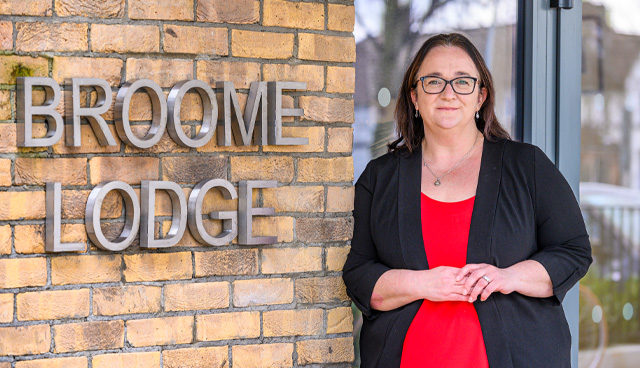
Irish local authority housing “inadequate” says Council of Europe
1st June 2021
Housing affordability in Ireland
1st June 2021Approved Housing Bodies are key to growth of social housing sector in Ireland

Across Europe, social housing is being delivered and operated in a highly regulatory environment. Although smaller in tenure than homeownership, social housing is regarded as a professional risk-adjusted asset class that attracts private ESG investors, write Ad Hereijgers, Business Development Director and Austen Reid, United Kingdom Director of RITTERWALD Consulting.
For post Covid economic prosperity of urban areas such as Dublin and Cork, the rental market becomes ever more important in supporting young singles and couples that prefer living in an urban environment where more employment is to be found. To spur new construction, approved housing bodies (AHBs) should be incentivised by government to become the housing providers of choice.
AHBs at par with LHA in new construction
Over the last couple of years, we have been following Ireland’s social housing sector from a distance. We have noticed promising news: Approved Housing Bodies (AHBs) have gained traction and with over 4,000 homes built are about to pass Local Housing Authorities (LHAs) in annual housing construction. Moreover, the annual growth of AHBs housing stock is in double digits while LHAs seem to consolidate. Furthermore, the statutorily regulatory authority has been put into effect, a condition for growing into a maturing market position.
In our view, LHAs cannot sustain viable business models for rental housing. They rely too heavily on capital granted by national government, paying the full cost of building or buying homes upfront in a lump sum, whereas AHBs (in post reclassification situation) spread the costs over longer periods of time with debt finance. Moreover, because LHAs also own and operate the oldest housing stock, they will need increased grant funding for delivering the decarbonisation agenda.
AHBs: From start up to scale up to grown up
Social housing only accounts for 9 per cent of Ireland’s housing stock of a little more than two million homes. The total stock of AHBs registers circa 38,000 and remains still smaller than LHAs stock (139,000), let alone the private rental sector stock (325,000).
AHBs are relatively young in housing body terms, and over half of their homes are owned and managed by six AHBs working together in the Housing Alliance: Circle Voluntary Housing Association, Clúid Housing, Co-operative Housing Ireland, Oaklee Housing, Respond and Tuath Housing. The Housing Alliance primarily operates in urban markets and joins forces on strategic issues in promoting AHBs becoming mainstream in delivering social housing.
When talking growth, one quickly starts thinking about mergers and acquisitions (M&A). This is going to happen now the regulator published an advice note on mergers. However, M&A is not the first option we would consider: for a successful M&A, one needs more than projected growth in numbers. Because localism and community services are rooted in the DNA of AHBs, one should start with considering organic growth models from the perspective of consolidation. After that, common M&A considerations come into play in terms of economies of scales and serving regional markets. The number of AHBs (over 300) and their variety in scale will be a challenge though: it is not only about matching numbers, but also about bridging cultural biases among housing professionals and volunteers.
To accommodate AHBs to grow, one can identify at least two pathways to start with. Firstly, new development, supported by government to give access to publicly owned land. Secondly, stock transfers from LHAs. Other countries, such as the UK and the Netherlands have done this successfully in the past. Not only does it take housing off the Exchequer account, but it also provides the council tenants with dedicated services from social housing professionals. And yes, some local councillors are not going to like this, but they must acknowledge that, in the long run, tenants of social housing are better off under the services of AHBs. In this way, public sector resources can be directed to other services where a mixed funding model is less viable (such as public transport, public space, public education, and health care).
From markets with a longer tradition and permanent shortage of social housing, we have learned that professional not-for-profit housing providers are most sustainable in their business models. Therefore, we suggest AHBs could, and preferably should, grow steadily. Selected current drivers could support the roadmap to growth and create more awareness among stakeholders in the social housing sector: the Irish should be proud of the accomplishments of its AHBs and cherish its future.
Accommodate growth
of AHBs
 Across Europe, providing and sustaining high-quality housing at affordable cost with security of tenure needs capacity, regulation, and capital. These are the levers for viable business models.
Across Europe, providing and sustaining high-quality housing at affordable cost with security of tenure needs capacity, regulation, and capital. These are the levers for viable business models.
Capacities: Professional skills are needed for asset and property management as well as development, finance, and social services. In market regions, some of these skills can be shared among the AHBs. A good example of such a dedicated platform is Dublin-based Housing Alliance.
Regulation: A mature social housing sector does flourish in a regulatory environment. Having the Approved Housing Bodies Regulatory Authority (AHBRA) into effect since 1 February is key. The AHBRA will have the responsibility of overseeing the effective governance, financial management and performance of AHBs in accordance with the legal framework set out in the Housing Act 2019. The AHBRA will safeguard public and private investment in the AHB sector and ensure that assets are managed sustainably.
Access to debt capital: Debt capital enables growth, both in new development and acquisitions. Sufficient debt capital capacity also enables AHBs to deliver the decarbonisation agenda. Debt capital can be leveraged against grant funding and operating margins. To an increasing extent, institutional investors (especially pension funds) look to ESG credentials of AHBs to align their investments with their mandates.
ESG Accreditation
RITTERWALD has developed and succesfully issued two ESG accreditation tools, Certified Sustainable Housing Label and Sustainable Housing Asessment, to support AHBs in showing and enhancing their corporate sustainability performance, expanding and diversifying their lender base and developing and improving ESG reporting to their stakeholders.
Certified Sustainable Housing Label: developed to find ESG investors in the debt capital markets. We assess an AHB against a comprehensive catalogue of more than 40 environmental, social and governance criteria. A second party opinion (SPO) then reviews our evaluation. If successful, the AHB may then use the label to present itself as a certified sustainable housing company. An annual review is undertaken to ensure the company keeps complying with the implementation and fulfilment of the goals set out at the time the certificate was awarded.
Sustainable Housing Assessment: Primarily developed as an ESG assessment tool supporting AHBs that raise capital via bank loans or private placements. It does assess 10 core ESG criteria. Alternatively, an AHB may want to report its ESG credentials at a corporate level, e.g. as part of its stakeholder management: tenant bodies, local authorities, bond aggregator and, in the future, AHBRA.
Berlin | Frankfurt | London | Amsterdam
E: ad.hereijgers@ritterwald.nl
austen.reid@ritterwald.co.uk
W: www.ritterwald.eu
www.sustainable-housing.eu








